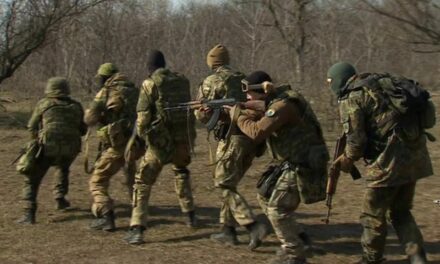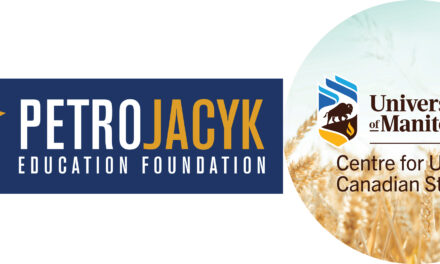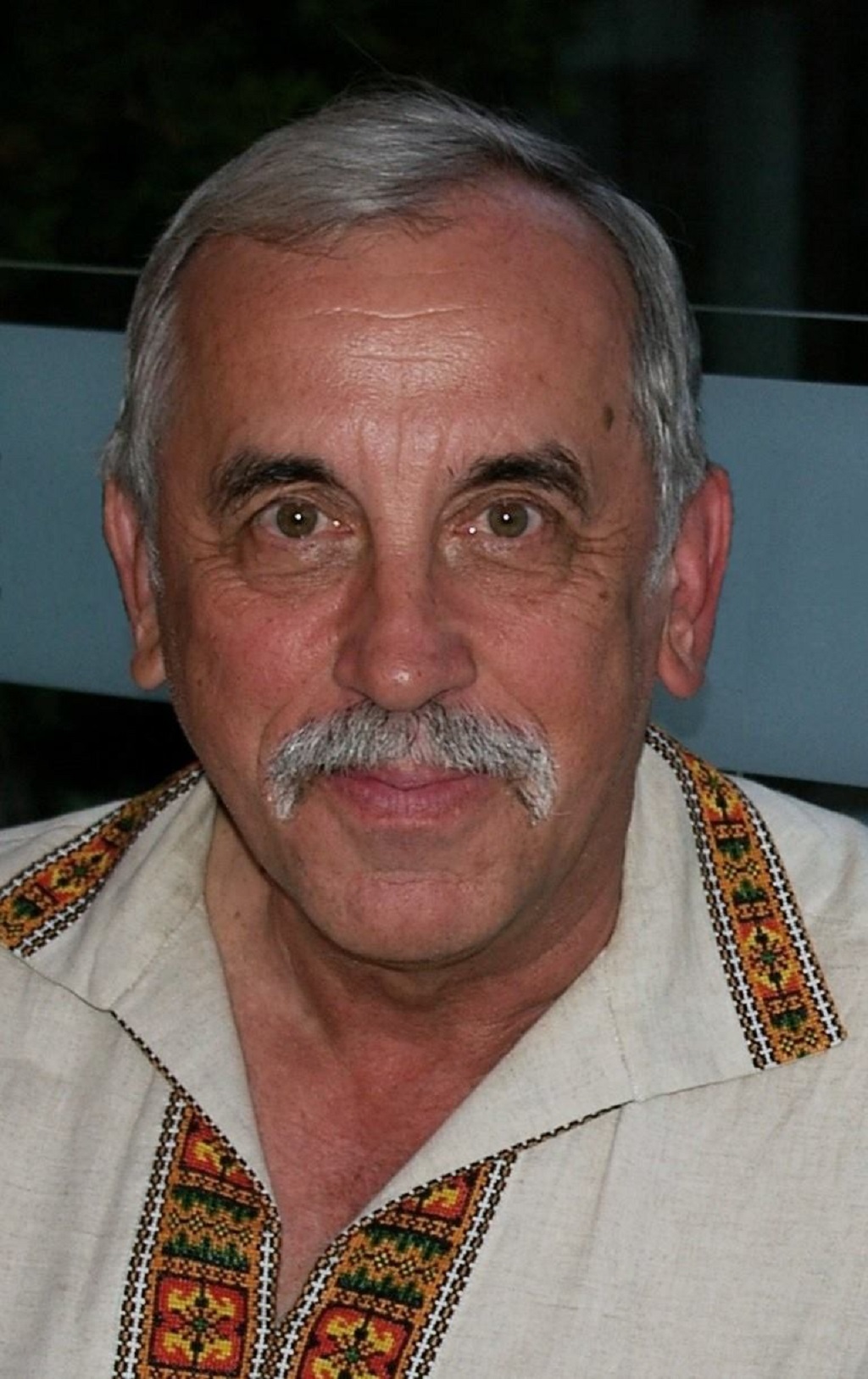Askold S. Lozynskyj, New York.
Ms. Applebaum’s biography and her previous impressive body of work attest to her expertise in Eastern European affairs and history. In RED FAMINE she presents a “beyond a reasonable doubt” case for man-made famine so markedly dissimilar from famines caused by natural circumstances. Through oral histories, Soviet documents and communications between Soviet leaders, she submits overwhelming evidence of more than excessive, brutal requisitions of grain, taxation resulting in removal of food products and livestock, punishment through blacklists and other coercive methods including border closings (to Russia where there was food) making it impossible for Ukrainians to escape their nightmare. All the while the Stalin and the regime exported grain internationally, refused external assistance and coerced a coverup, purging records and exploiting “useful idiots”.
In 1932 as a result of forced collectivization, a famine wasted the USSR, particularly that republic most affected by that policy, the Ukrainian SSR where there was substantial resistance to collectivization process. In Stalin’s mind even the Ukrainian communists were complicit in the opposition. By August 1932 Stalin decided to use this opportunity to break the nationalistic resistance and destroy the defiant Ukrainian peasant.
“Stalin’s policies that autumn led inexorably all across the grain-growing regions of the USSR. But in November and December 1932 he twisted the knife further in Ukraine, deliberately creating a deeper crisis. Step by step, using bureaucratic language and dull legal terminology, the Soviet leadership, aided by their cowed Ukrainian counterparts, launched a famine within the famine, a disaster specifically targeted at Ukraine and Ukrainians.”
While her research is thorough and impressive, there are nonetheless certain deficiencies in Ms. Applebaum’s account, in particular, tangential issues and at least two substantive conclusions reached too easily.
The tangential include statements such as mischaracterization of Ukrainian lands which “lay at the heart of Kyivan Rus, the medieval state in the ninth century…an almost mythical kingdom that Russians, Belarusians and Ukrainians claim as their ancestor”. Kyivan Rus predated Moscow by more than three hundred years and even in the thirteenth century Moscow was not a state but a provincial village of the Golden Horde. The claim of joint origin began with Russian colonial attempts to subvert the idea of a separate Ukrainian nation by distorting history. This distortion of history is manifest also in Russia’s denial of the Holodomor.
Similarly Ms. Applebaum, in recounting the assault on the Ukrainian intellectual world in 1930 as represented by a show trial of Ukrainian intellectuals at the Kharkiv Opera House relegates the Union for the Liberation of Ukraine to a creation of the Soviet regime when there is ample historical evidence particularly memoirs of the Union’s existence as a struggle for Ukraine’s independence.
More importantly, the number of Holodomor victims in Ukraine is not adequately considered. Ms. Applebaum simply accepts a number recently arrived at by several demographers from Ukraine and one from the United States. More attention should have been accorded to their sources and methodology, since their scholarship has been contradicted by many scholars prior to and since their conclusions. More renowned experts have concluded a substantially higher number and the consensus today remains at 7 million.
RED FAMINE is an emotional read largely because of the recounted oral histories. Yet, the author manages to intertwine those memoirs with authentic documents producing a solid piece of evidence of a man-made famine. While there was never any question as to whether there was a famine in the USSR in 1932-33, Ms. Applebaum lays to rest any doubt as to whether this famine was used by Stalin and his Soviet regime to destroy the Ukrainian peasantry.
Given Stalin’s pervasive activities against the Ukrainian churches and the intellectuals, the soul and intellect of the Ukrainian people, the action against the peasantry (the heart of the nation) was indisputably the third part of a four pronged attack against the Ukrainian nation. The fourth was the resettlement of Russians on Ukrainian territory. This is, in sum, Raphael Lemkin’s thesis regarding the genocide against Ukrainians which he presented in 1953 at the 20th anniversary of the 1932-33 Famine. The soul, intellect and heart metaphors are Lemkin’s.
Lemkin, a Polish Jew who studied law at the Ukrainian University of Lviv is generally credited with coining the term genocide. Importantly, he was also one of the drafters of the UN Convention on the prevention and punishment of genocide. Lemkin considered the Ukrainian Famine of 1932-33 part of the genocide against the Ukrainian people in the XX century.
The UN Convention adopted in December 1948 defined genocide as: “In the present Convention, genocide means any of the following acts committed with intent to destroy, in whole or in part, a national, ethnical, racial or religious group, as such.” That definition remains unamended.
Ms. Applebaum writes that the Famine 1932-33 does not fit that definition because there was no intent to destroy the entire Ukrainian nation. Certainly an attempt to destroy the Ukrainian nation in part as specifically stated in the Convention, by destroying its peasantry, it’s indispensable part, its heart as Lemkin stated, qualifies under the definition of the Convention which specifically states “in whole or in part”. Furthermore, the intent was to destroy the entire nation by destroying its soul, intellect, heart and replacing it with Russians.
As a further act of diplomacy Ms. Applebaum suggests that the blame for the famine belongs to the Stalin Soviet regime and not Russia or the Russians. After all Ukraine’s president Yushchenko made this statement in 2008 encouraging Russian president Medvedev to recognize the Famine of 1932-33. Yet even for those who choose to believe that the USSR was not simply another form of Russian empire, the Russian Federation as the successor of the USSR has assumed responsibility for the Holodomor through an elaborate campaign within the international community to deny the Holodomor including any mention of it at the United Nations. Internally the Russian Federation has dissolved all central Ukrainian structures in Russia, brazenly basing its alleged grounds for dissolution on that community’s commemoration of the Famine of 1932-33. The Russian Federations current coverup more than suggests complicity.
Notwithstanding the above observations, Ms. Applebaum’s RED FAMINE is an emotional, almost exhausting but most worthwhile read for anyone interested in Ukraine, genocides, the crimes of Stalin or other Soviet leaders or simply concerned with humanity and justice. For most people generally unfamiliar with Russian history, but currently interested in a better understanding of the Russia’s psyche and its capabilities based on its history, RED FAMINE provides an education.
Share on Social Media


































